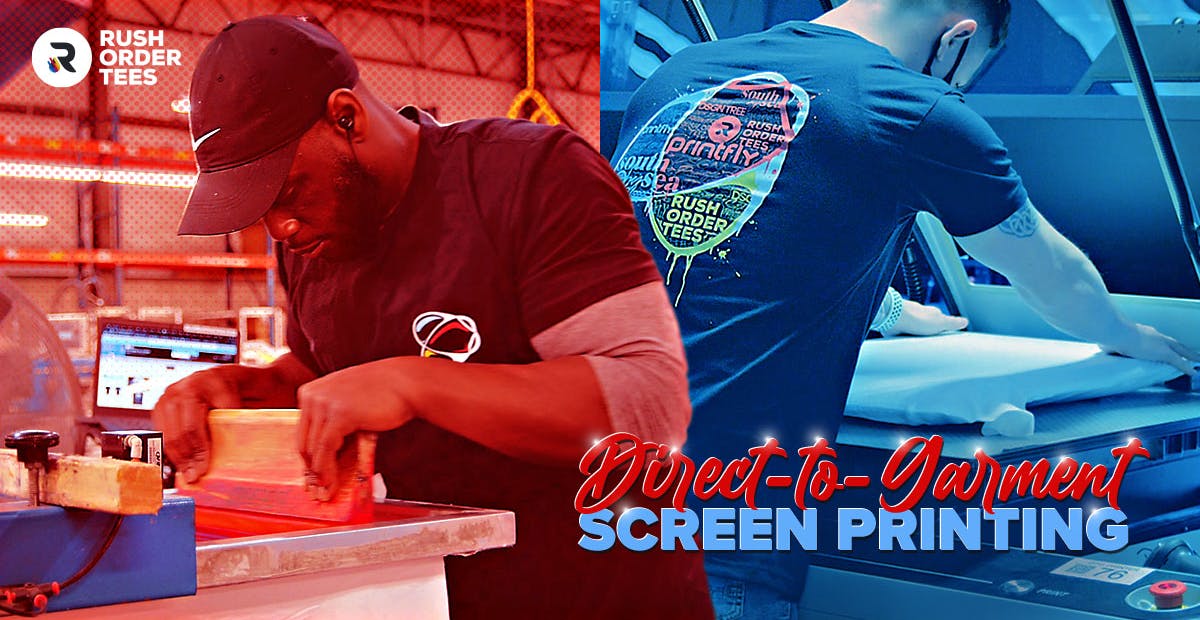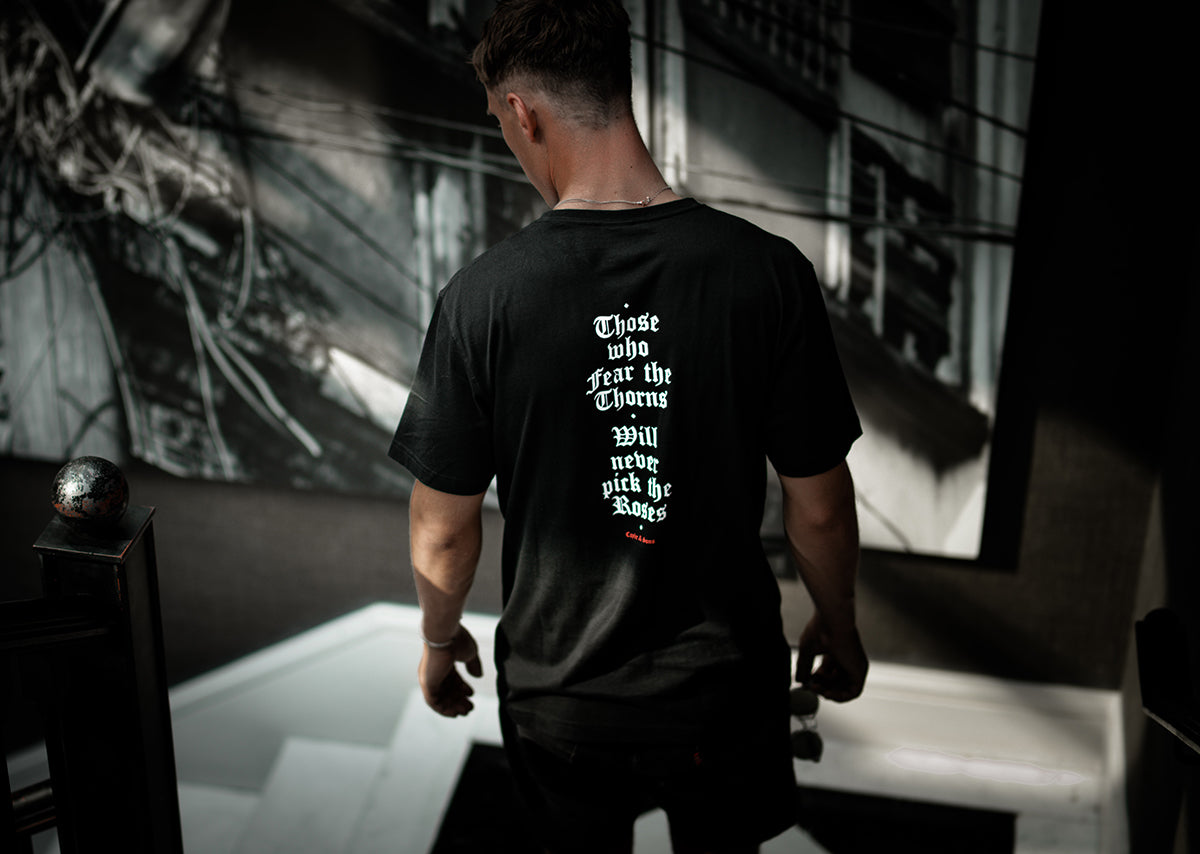10 Simple Techniques For Tx Tees
10 Simple Techniques For Tx Tees
Blog Article
Tx Tees Can Be Fun For Anyone
Table of ContentsThe Tx Tees StatementsWhat Does Tx Tees Mean?9 Simple Techniques For Tx TeesTx Tees for DummiesFacts About Tx Tees RevealedThe 6-Second Trick For Tx TeesThe Single Strategy To Use For Tx Tees
Include up various other prices, like the number of utilities it takes to run the store and the price of ink and solution per design. Take the print listed below.The solution should only be a few cents considering that you 'd only require to coat one display for this work. How much should you charge per tee shirt to make a revenue? Typically, printers attempt to make up to 45% earnings on a print job. Below's a table to help you figure out that: overall expense per product percent of desired earnings as a decimal (instance:.25 or.45) earnings made per item per task Now let's speak about the earnings of DTF.

With DTF, you can publish a handful of t-shirts, or simply one. Both screen printing and DTF have their niches in the globe.
The Facts About Tx Tees Revealed
The best means to recognize? Ask around and see what print shops like your own are doing. screen printing shop. Attempt both out and see which you like better
When you're selecting what kind of printing technique to make use of for publishing your art work designs on your garments, it's crucial that you know the differences between these 2 techniques so you can make best use of results while minimizing costs. Screen printing is one of the most commonly used strategy for publishing styles on fabrics.
DTG printing is likewise referred to as area or direct to garment printing because it prints only what is required rather of making a display as display printers do. https://www.avitop.com/cs/members/txtees02.aspx. Display printing functions by display filler squeegee screen printing ink display mesh screen, after that moving the image to garment making use of heat and/or stress
The DTG printer makes use of special dye-sublimation inks that are applied into a pre-designed photo by a digital printing system. The inks enter into the material, allowing for lively shades and exceptional information. It's additionally referred to as place or direct to garment printing due to the fact that it prints just what is required as opposed to making a display as display printers do.
Getting The Tx Tees To Work
Initially, it's much faster - you can print a fullcolor picture in minutes, rather than hours for display printing. Second, there's no set up time or expenses included - you can print any style you like, without having to produce a screen. Third, there's no waste - because display printers display print one layout at once, they need to evaluate each shade individually.
The paper is extremely costly and can only be made use of as soon as. Once it's published on, it has actually to be thrown out. - The first acquisition cost is less than the upfront investment of DTG printers- You can publish multi-color layouts one display each time rather than needing to print each shade individually like DTG printing.

Some Of Tx Tees
However, rather than using screen mesh as screen printers do, color sublimation printers utilize laser technology to transfer your pictures onto garments or paper. A warm procedure moves the color from its solid-state directly right into the gas stage which in turn fuses it onto material substrates when they are quickly heated up to high temperature levels under high stress.
Sublimation printing is environmentally friendly. It uses less water than screenprinting, and due to the fact that it does not entail using harmful solvents, it's risk-free for all types of clothing. The dye sublimation inks this page are likewise odor free when healed, unlike screen printers that make use of hazardous chemicals during the display printing process that leave behind an unpleasant odor.
They also save money on costly equipment like direct exposure systems given that color sublimation printers do not need a UV exposure unit or a flash cure stove that is typically used in display printing (custom cap printing). What is direct to garment printing (DTG Printing)? DTG printing is an electronic screenprinting process that prints directly onto material utilizing specialized inkjet printers
All About Tx Tees
DTG printing uses numerous advantages over standard screenprinting, including the capacity to print photo high quality photos, better shade vibrancy, and the capability to print styles on darker textiles. DTG printers function by heating the fabric ink until it develops into a gas. The gas then penetrates the fabric, bonding with the fibers to develop a permanent print.

Screen printers simply prepare their display after that start printing until they lack item or ink.- There is a large range of skilled screen printers all over the globe, which can be helpful for newbies. - It's a slower procedure - screen printers typically have to wait for the ink to completely dry before they can print the following color- Screen printers call for manual work, so there's a higher learning contour and it takes longer to create a top notch style- Screen printing isn't as exact as DTG printing, so you may obtain some "blood loss" of colors from one component of the picture onto another otherwise done effectively.
Tx Tees - An Overview
However, as opposed to utilizing display mesh as screen printers do, dye sublimation printers make use of laser technology to move your pictures onto garments or paper. A warmth process transfers the color from its solid-state directly into the gas phase which subsequently fuses it onto material substratums when they are rapidly heated to high temperature levels under high stress.
Sublimation printing is environment-friendly. It uses much less water than screenprinting, and since it does not entail making use of unsafe solvents, it's risk-free for all kinds of clothing. The color sublimation inks are additionally odorless when cured, unlike screen printers that utilize unsafe chemicals during the screen printing process that leave behind an unpleasant odor.
They additionally conserve cash on costly tools like exposure units because dye sublimation printers don't need a UV direct exposure device or a flash treatment stove that is generally utilized in screen printing. What is direct to garment printing (DTG Printing)? DTG printing is a digital screenprinting process that prints directly onto fabric using specialized inkjet printers.
The Tx Tees Diaries
DTG printing offers numerous benefits over conventional screenprinting, consisting of the ability to publish photo high quality photos, greater shade vibrancy, and the capacity to print styles on darker textiles. DTG printers work by heating the fabric ink till it turns right into a gas. The gas after that penetrates the material, bonding with the fibers to create an irreversible print.
Report this page